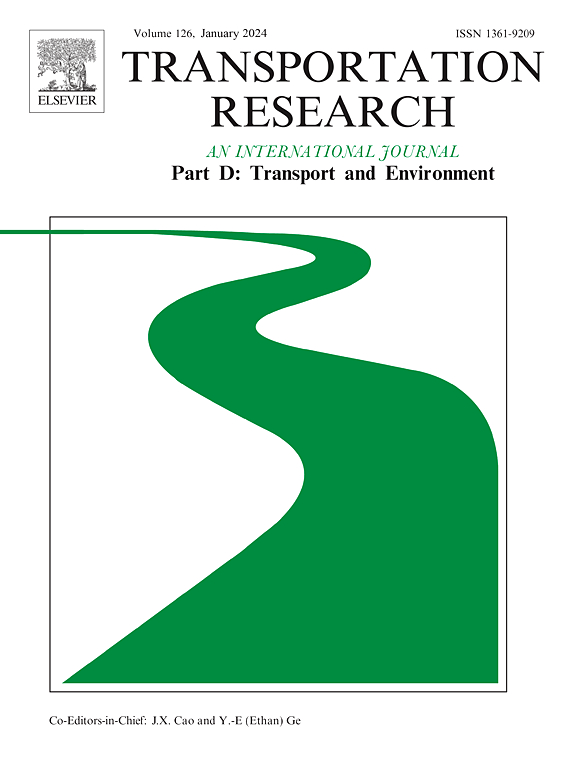Mitigating traffic pollution alongside elevated roads: Insights into vertical emission transmissions
IF 7.7
1区 工程技术
Q1 ENVIRONMENTAL STUDIES
Transportation Research Part D-transport and Environment
Pub Date : 2025-09-25
DOI:10.1016/j.trd.2025.105004
引用次数: 0
Abstract
Elevated roads heighten traffic emissions and alter airflow patterns, posing unresolved questions regarding their impact on roadside air pollution compared to flat roads. This study utilized drone-based monitoring and machine learning to analyze vertical traffic pollution levels to inform elevated road design. Results revealed that roads elevated about 8 m above ground significantly raised black carbon (BC) levels, strongly associated with diesel vehicle emissions, at heights of 20–40 m. Under-bridge closures caused notable changes in all particle types, including PM2.5 and PM1.0, up to heights of 60 m. Elevated traffic emissions also intensified ozone (O3) vertical gradients. The resilient random forest model further found strong correlations between particle vertical structures and boundary layer height, alongside significant relationships with local temperature, humidity, and solar radiation. Pollution mechanisms varied within 0–20 m compared to higher elevations, particularly extending to 40 m for BC near the closed under-bridge road, suggesting the necessity for tailored control measures.
缓解高架道路旁的交通污染:对垂直排放传输的洞察
高架道路增加了交通排放,改变了气流模式,与平坦道路相比,高架道路对路边空气污染的影响带来了尚未解决的问题。这项研究利用基于无人机的监测和机器学习来分析垂直交通污染水平,为高架道路设计提供信息。结果显示,在距离地面约8米的高度,道路显著提高了黑碳(BC)水平,与柴油车的排放密切相关,高度为20-40米。桥下封闭导致60 m高度的PM2.5和PM1.0等所有颗粒物类型发生显著变化。交通排放的增加也加剧了臭氧(O3)垂直梯度。弹性随机森林模型进一步发现了颗粒垂直结构与边界层高度之间的强相关性,以及与当地温度、湿度和太阳辐射之间的显著相关性。与较高海拔相比,污染机制在0-20米范围内有所不同,特别是在靠近封闭桥下道路的BC延伸到40米,这表明有必要采取量身定制的控制措施。
本文章由计算机程序翻译,如有差异,请以英文原文为准。
求助全文
约1分钟内获得全文
求助全文
来源期刊
CiteScore
14.40
自引率
9.20%
发文量
314
审稿时长
39 days
期刊介绍:
Transportation Research Part D: Transport and Environment focuses on original research exploring the environmental impacts of transportation, policy responses to these impacts, and their implications for transportation system design, planning, and management. The journal comprehensively covers the interaction between transportation and the environment, ranging from local effects on specific geographical areas to global implications such as natural resource depletion and atmospheric pollution.
We welcome research papers across all transportation modes, including maritime, air, and land transportation, assessing their environmental impacts broadly. Papers addressing both mobile aspects and transportation infrastructure are considered. The journal prioritizes empirical findings and policy responses of regulatory, planning, technical, or fiscal nature. Articles are policy-driven, accessible, and applicable to readers from diverse disciplines, emphasizing relevance and practicality. We encourage interdisciplinary submissions and welcome contributions from economically developing and advanced countries alike, reflecting our international orientation.

 求助内容:
求助内容: 应助结果提醒方式:
应助结果提醒方式:


